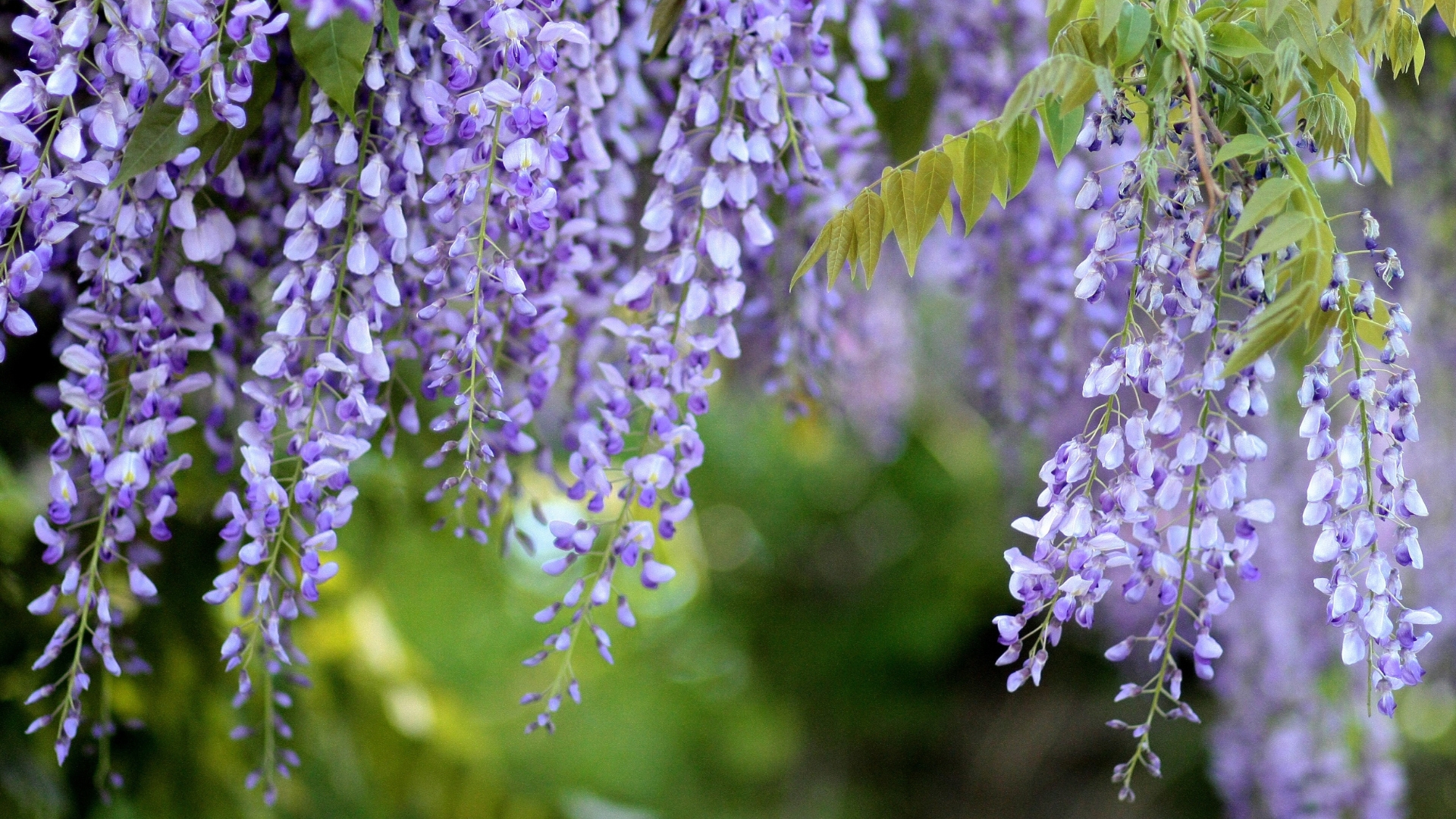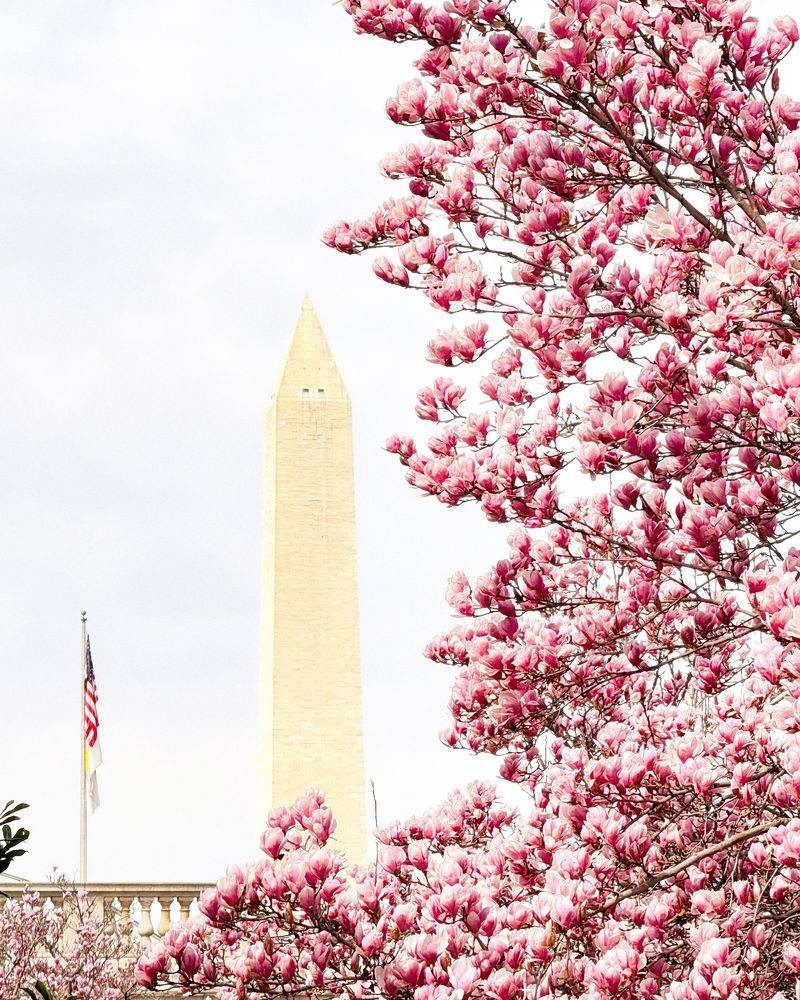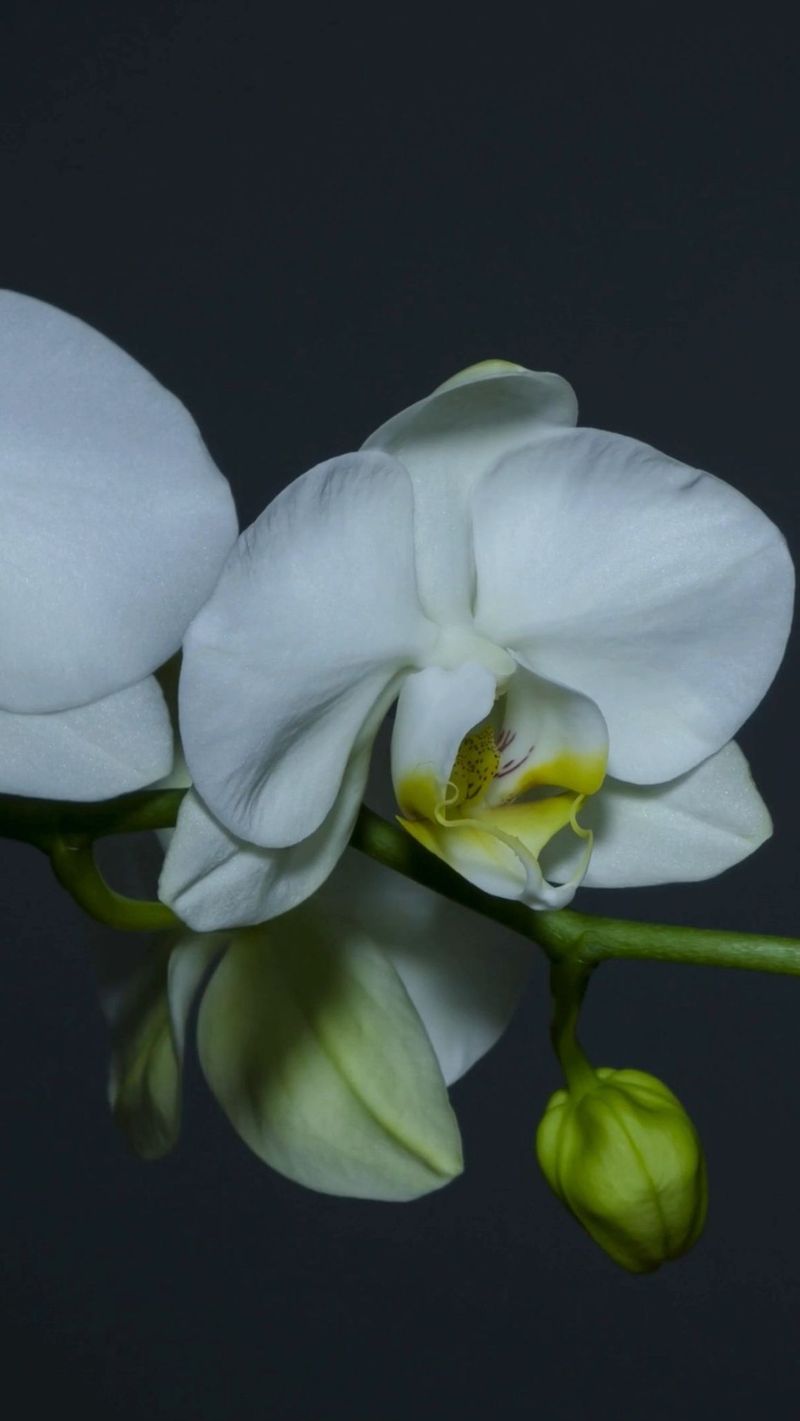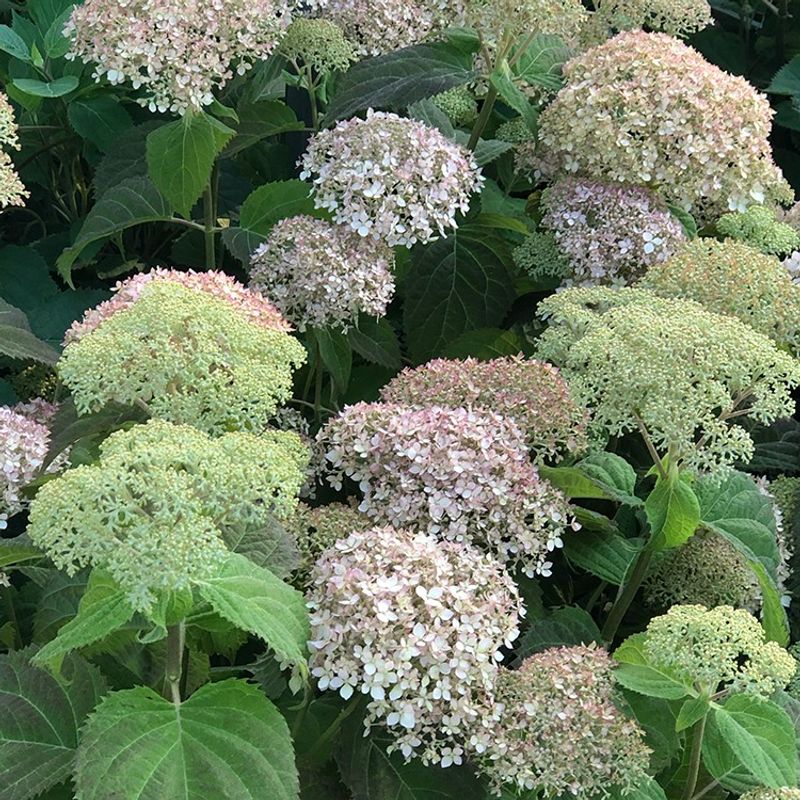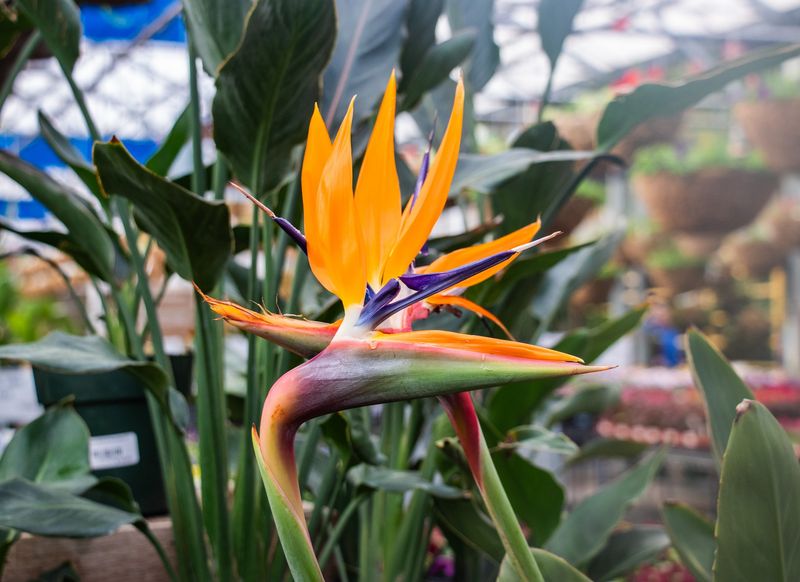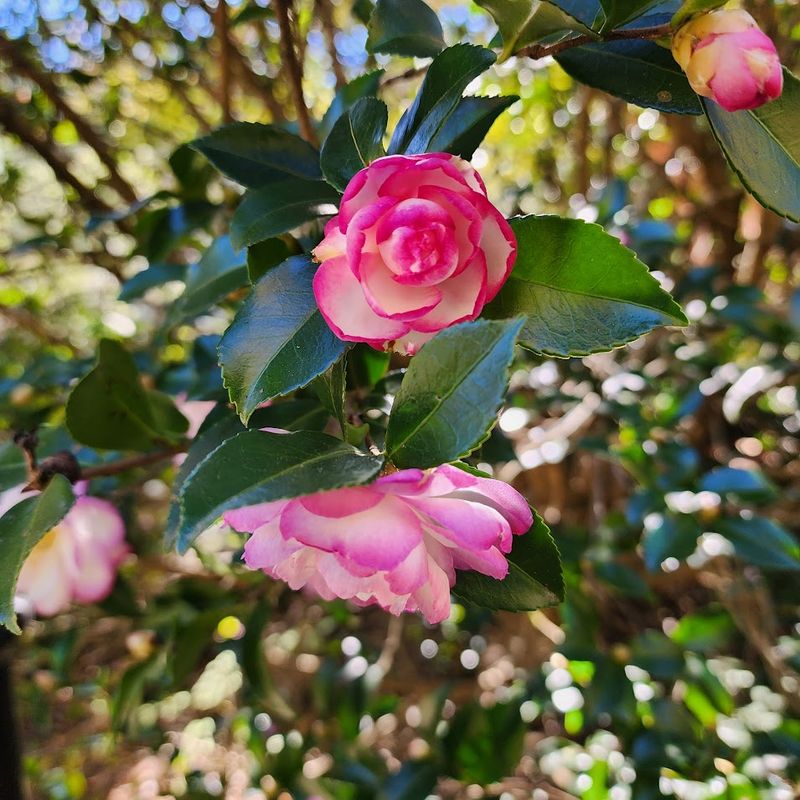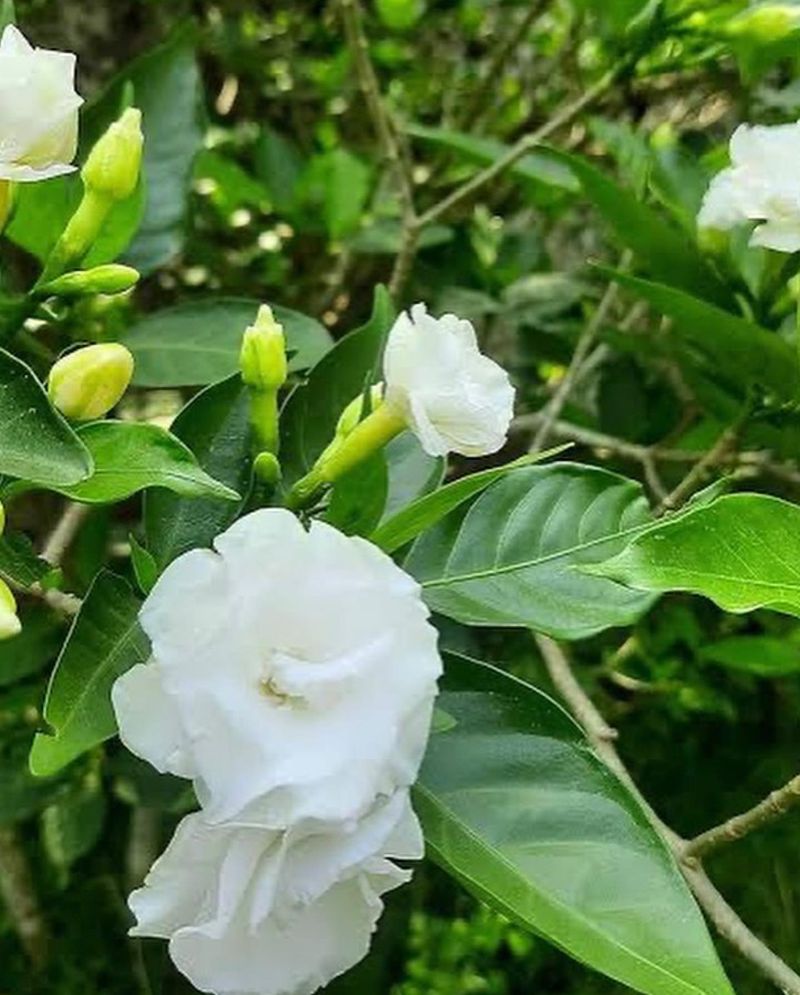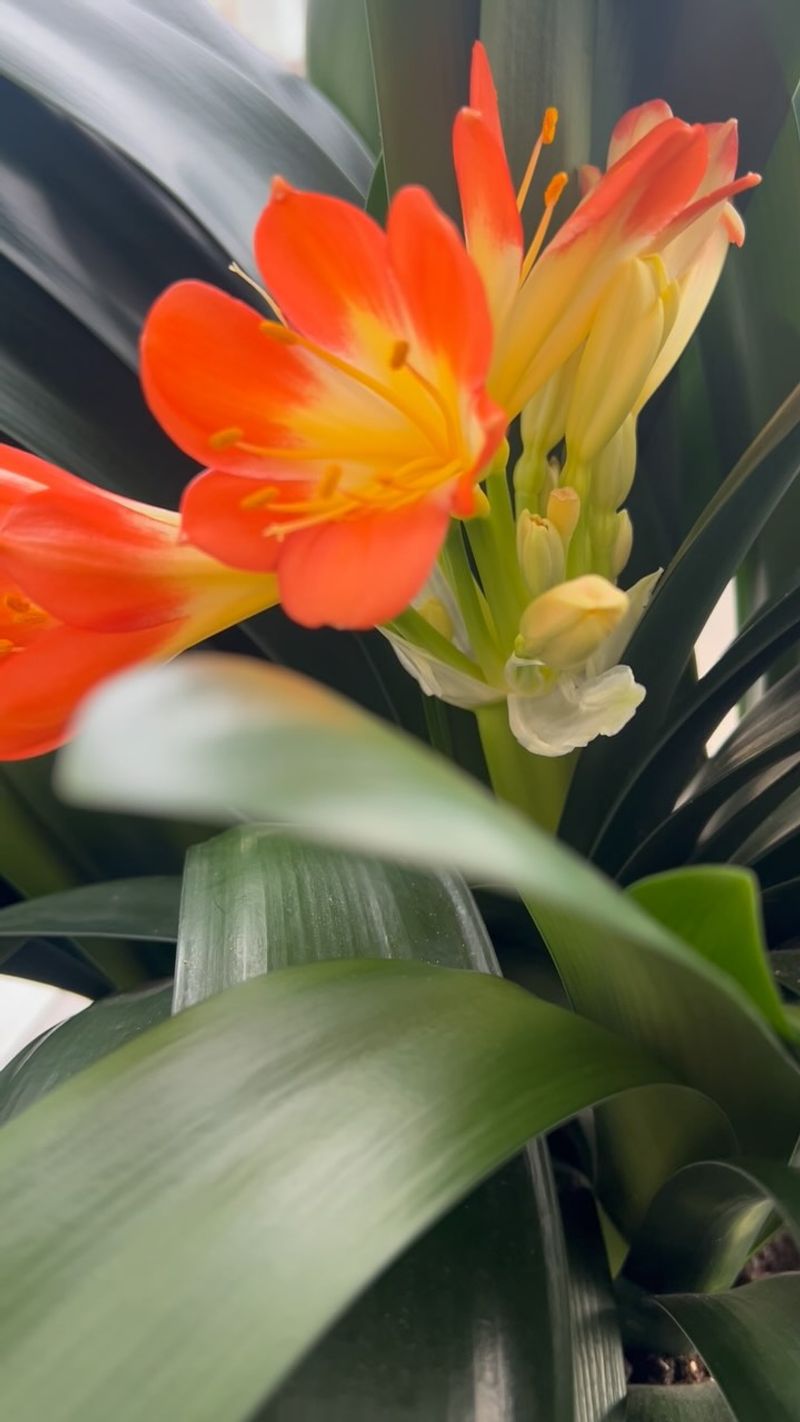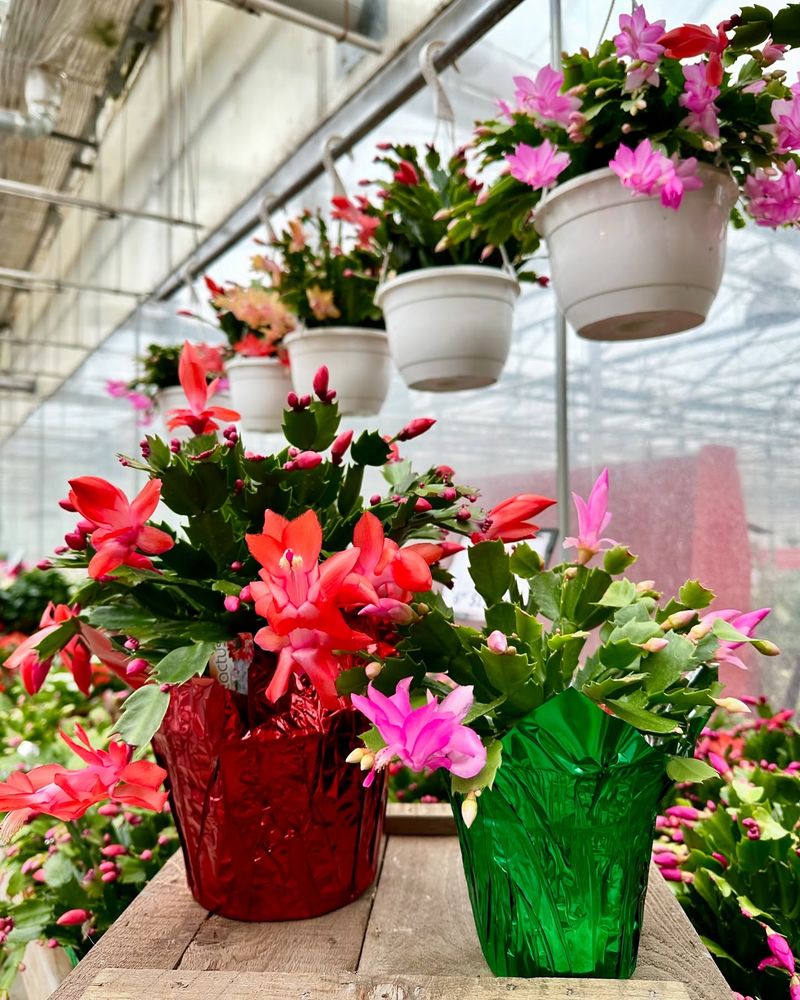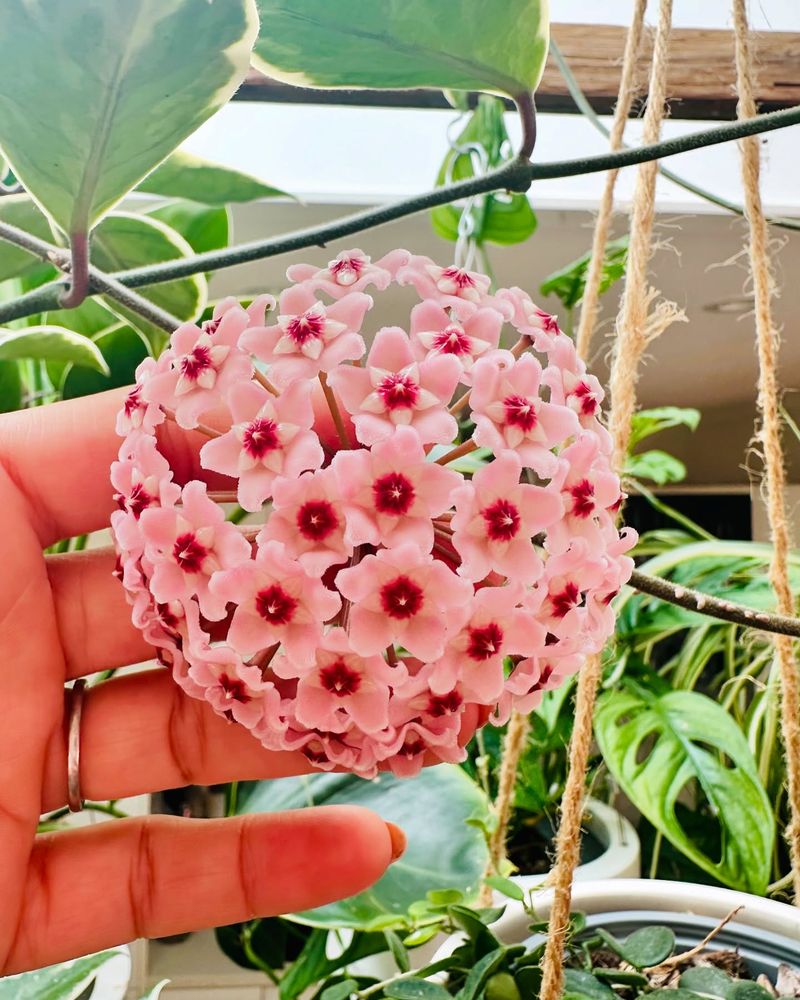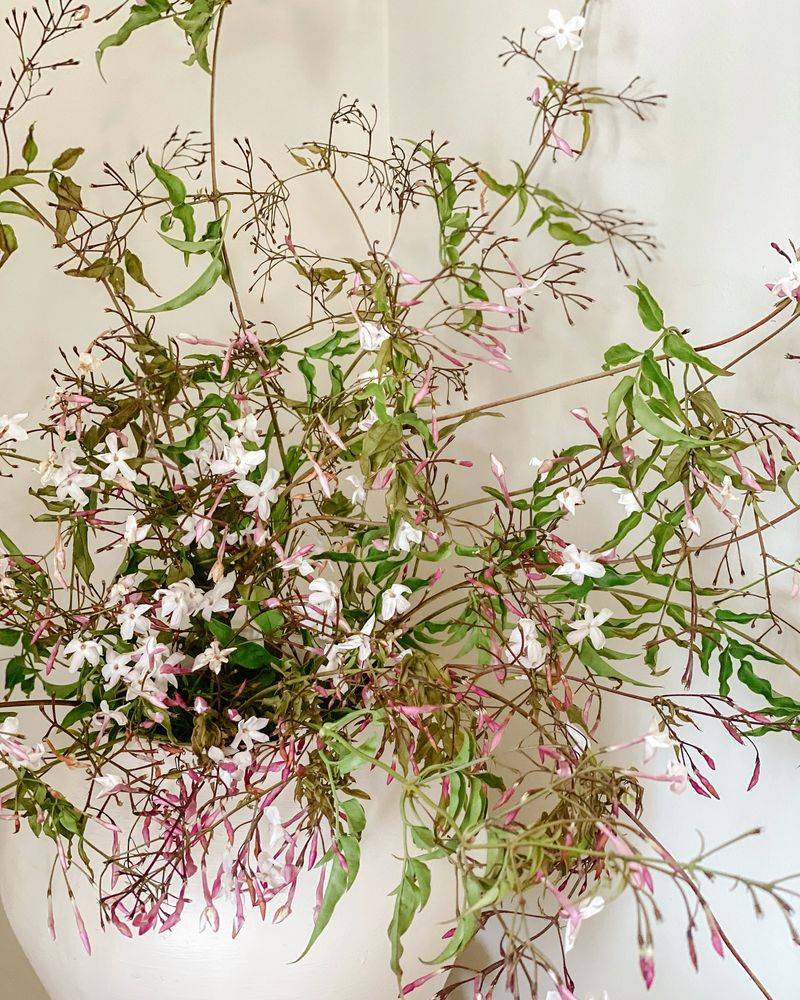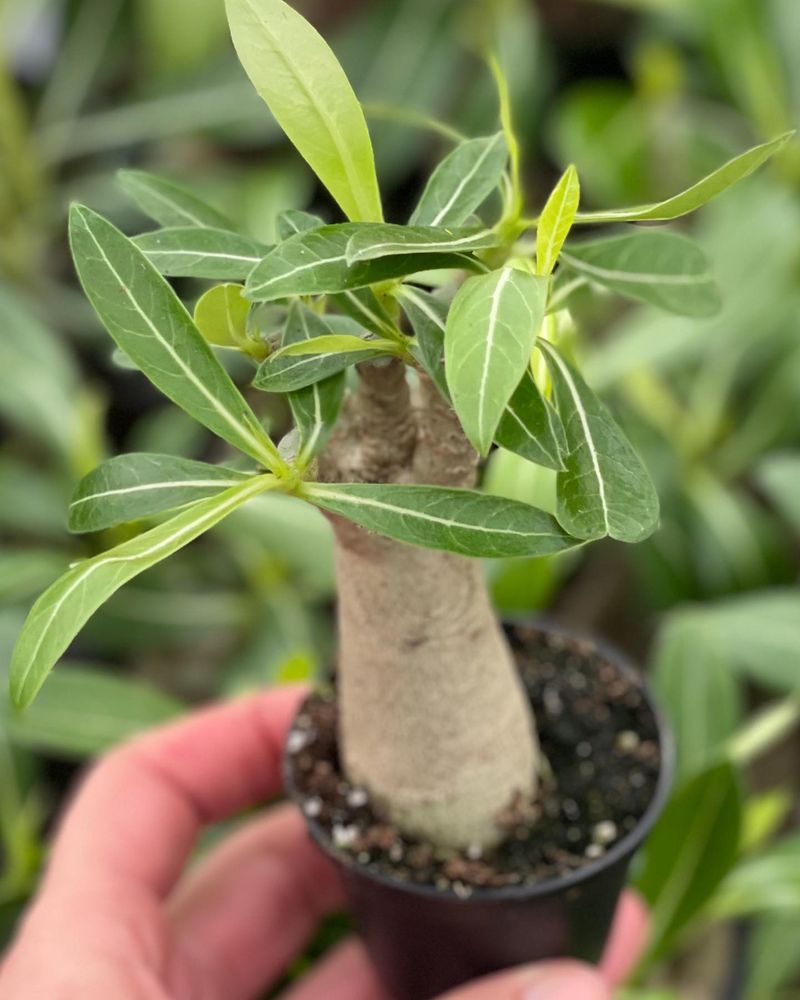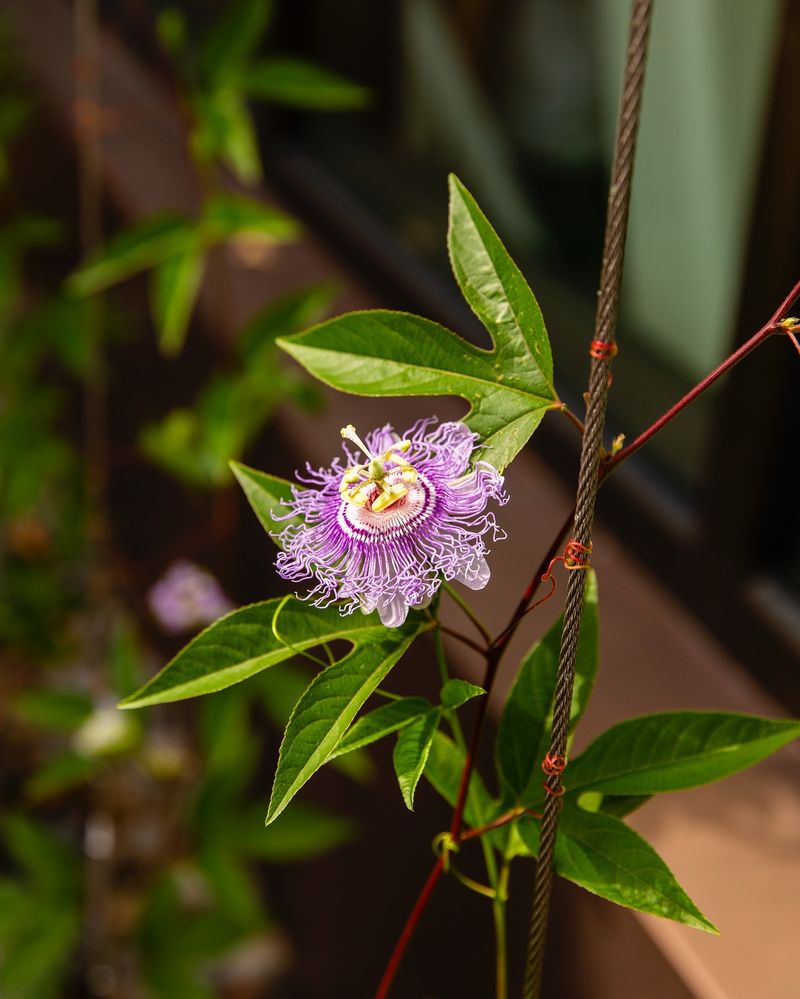Some plants just refuse to play nice—no matter how sweet you talk to them. These 10 flowering plants are experts at testing your patience, blooming only when they feel like it.
I’ve babied a few of them myself, and still ended up with more leaves than flowers. A couple of these need so much attention, you’d think they were royalty.
If you love a challenge, this list is full of divas waiting for their spotlight.
1. Wisteria
Patience isn’t just a virtue with wisteria—it’s an absolute requirement. Young plants can take up to seven years before producing their first cascading purple blooms, leaving many gardeners wondering if they’ve done something wrong.
Even mature wisteria can be temperamental about flowering. Too much nitrogen fertilizer encourages lush foliage at the expense of flowers, while improper pruning can accidentally remove the flower buds. The key to success lies in planting in full sun, using phosphorus-rich fertilizer, and mastering the specific pruning technique this woody vine demands.
2. Orchids
Just bought a gorgeous orchid only to watch it refuse to bloom again? You’re not alone in this frustrating experience. Store-bought orchids often flower once then stubbornly produce nothing but leaves for years despite your best efforts.
The secret to reblooming lies in mimicking their natural habitat. Most orchids need a temperature drop at night, indirect but bright light, and a period of rest after flowering. Overwatering is the number one killer, while proper humidity and occasional feeding with orchid-specific fertilizer can finally coax those stubborn buds to appear again.
3. Hydrangeas
Those big, beautiful hydrangea blooms you envisioned might remain just a dream if you’re making common mistakes. Many gardeners accidentally prune off the flower buds or plant their hydrangeas in too much shade, resulting in lush foliage but zero flowers.
Timing is everything when it comes to pruning these temperamental shrubs. Macrophylla varieties (the most common) bloom on old wood, so cutting them back in fall or spring removes next season’s flowers. Cold winter damage to buds is another culprit, while soil pH affects not only color but sometimes the plant’s willingness to bloom at all.
4. Bird of Paradise
Despite its tropical good looks, the Bird of Paradise plant can test your patience for years before revealing its iconic orange and blue blooms. Many indoor specimens never flower at all, leaving owners wondering what they’re doing wrong with this dramatic houseplant.
Light is the critical factor most people underestimate. These sun-lovers need at least four hours of direct sunlight daily to even consider flowering. Maturity matters too—plants typically need to be 4-5 years old before they’ll bloom. Cramped roots actually encourage flowering, so don’t rush to repot, and feed with a high-phosphorus fertilizer to encourage those elusive exotic blooms.
5. Camellias
Watching camellia buds form only to drop off before opening is enough to make any gardener tear their hair out. These elegant shrubs are notorious for developing what’s called “bud blast”—when promising buds brown and fall without ever showing their beautiful blooms.
Dramatic temperature fluctuations are often the culprit behind this disappointing phenomenon. Camellias also hate having wet feet but demand consistent soil moisture, creating a tricky balancing act. Planting in the wrong location (too sunny or too windy) stresses the plant, while improper soil pH can prevent them from accessing the nutrients they need to complete the blooming process.
6. Gardenias
Nothing smells quite as heavenly as gardenia blooms—if you’re lucky enough to get them. These fragrant shrubs have earned a reputation as some of the fussiest flowering plants, dropping buds at the slightest change in their environment.
High humidity is non-negotiable for gardenias, making them particularly challenging for indoor growers in dry climates. They’re also incredibly particular about soil acidity, requiring a pH between 5.0 and 6.0 to absorb nutrients properly. Even watering must be consistent—never soggy, never dry—and they demand bright indirect light without hot direct sun. One temperature swing or feeding with the wrong fertilizer can cause all those promising buds to yellow and drop.
7. Clivia
Watching a neighbor’s clivia burst into orange blooms while yours sits stubbornly green year after year can test even the most patient gardener. These South African natives have specific requirements that must be met before they’ll grace you with their trumpet-shaped flowers.
The secret many people miss is that clivias require a winter rest period with cooler temperatures and very little water for about six weeks. Without this dormancy trigger, they’ll continue producing only leaves. Mature size matters too—plants typically need to be at least three years old before flowering. When they do finally bloom, the reward of those vibrant orange clusters makes the long wait worthwhile.
8. Bougainvillea
Those spectacular cascades of paper-like bracts in hot pink or purple might never materialize if your bougainvillea isn’t getting exactly what it needs. Many gardeners make the mistake of babying these plants, when what they really respond to is a bit of tough love.
Overwatering and over-fertilizing are the biggest mistakes with bougainvillea, resulting in lush green growth but no colorful bracts. These plants actually bloom best when slightly stressed from drought. Full, blazing sun is absolutely essential—even partial shade will reduce flowering dramatically. The combination of dry roots, bright light, and phosphorus-rich fertilizer is what finally triggers those breathtaking blooms that make the plant worth its fussy reputation.
9. Christmas Cactus
Despite its name, getting a Christmas cactus to actually bloom during the holiday season can feel like a Christmas miracle. Many people grow these plants for years with healthy green segments but never see a single one of their spectacular pink or red flowers.
The blooming trigger is all about light and temperature. Christmas cacti are photoperiodic, meaning they need 12-14 hours of darkness each night for about six weeks before they’ll set buds. Even brief light exposure during their dark period can reset the clock. Temperature drops to around 55-60°F at night also help initiate flowering. Keep the plant slightly root-bound and avoid moving it once buds form, or they’ll promptly drop off in protest.
10. Hoya
The waxy, star-shaped flowers of hoya plants have a cult following among houseplant enthusiasts—but many growers wait years without seeing a single bloom. These tropical vines have earned the nickname “patience plant” for good reason as they test gardeners’ dedication.
Light is critical but tricky with hoyas—too little and they won’t bloom, too direct and their leaves burn. Most species need to become quite root-bound before they’ll flower, so resist the urge to repot. The most common mistake is removing the strange little spurs that remain after flowers fade. These are actually specialized stems called peduncles, which will produce new flowers year after year if left intact.
11. Jasmines
The intoxicating scent of jasmine flowers might remain just a memory if your plant refuses to bloom. Many jasmine varieties are surprisingly temperamental about flowering, leaving growers with nothing but a tangle of green vines despite good care.
Temperature fluctuation is often the missing ingredient for stubborn jasmines. Most varieties need cooler night temperatures (around 10 degrees lower than daytime) to initiate blooming. Light intensity matters tremendously too—too little sun means no flowers, regardless of how healthy the foliage looks. Proper pruning timing is crucial, as cutting at the wrong time can remove the developing flower buds and guarantee another disappointing season.
12. Peace Lily
Those elegant white spathes that give peace lilies their appeal might never appear if conditions aren’t just right. Many people successfully keep these popular houseplants alive for years without ever seeing them flower, wondering what they’re doing wrong with this supposedly “easy” plant.
Light levels are usually the culprit behind non-blooming peace lilies. While they tolerate low light, they need medium to bright indirect light to produce flowers. Age also matters—young plants sold in stores may need time to mature before they’ll bloom again. Fertilizer can help, but using too much nitrogen promotes only leaf growth. When they do finally flower, each white “bloom” can last for weeks before gradually turning green.
13. Adenium
Desert roses (Adenium) tantalize with their exotic, trumpet-shaped blooms in catalogs, but the reality at home can be years of watching a swollen caudex grow without a single flower. These plants combine the worst traits of both succulents and tropical flowers when it comes to blooming requirements.
The biggest blooming barrier is insufficient light—adeniums need full, direct sun for at least six hours daily to even consider flowering. Many growers also miss that these plants need a winter dormancy period with cooler temperatures and reduced watering. Without this rest, they remain vegetative. The right fertilizer matters too; high-phosphorus formulas encourage blooming, while nitrogen-heavy feeds result in plenty of leaves but no flowers.
14. Passion Flower
The alien-like beauty of passion flowers makes their absence all the more disappointing when plants refuse to bloom. Many gardeners grow these fascinating vines for years, watching them spread vigorously without producing a single one of their otherworldly blooms.
Sunlight requirements are often underestimated for passion flowers—they need at least four hours of direct sun daily to flower properly. Fertilizer can be counterproductive; too much nitrogen encourages rampant foliage at the expense of flowers. Pruning timing is crucial too, as improper cutting can remove the wood that would produce blooms. Even with perfect conditions, some varieties simply need to reach a certain maturity before they’ll reward your patience with their extraordinary flowers.
15. Plumeria
The fragrant flowers used in Hawaiian leis might remain just a tropical dream if your plumeria refuses to bloom. These tropical trees can be surprisingly stubborn about flowering, especially when grown in containers or in climates different from their native range.
Cold temperatures are the enemy of plumeria blooms—even brief exposure to temperatures below 40°F can prevent flowering for an entire season. Container plants often struggle to flower due to insufficient root space or inadequate fertilization. Plumerias are heavy feeders during their growing season, requiring regular applications of high-phosphorus fertilizer. Without a proper dormancy period in winter with reduced watering, they may grow beautifully but refuse to produce their iconic pinwheel blooms.

